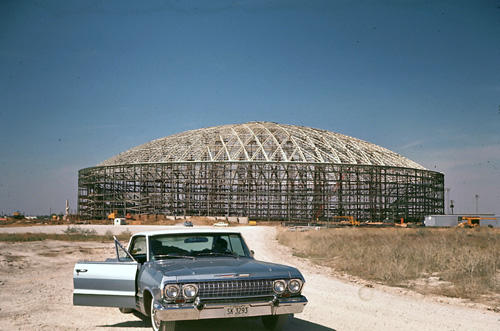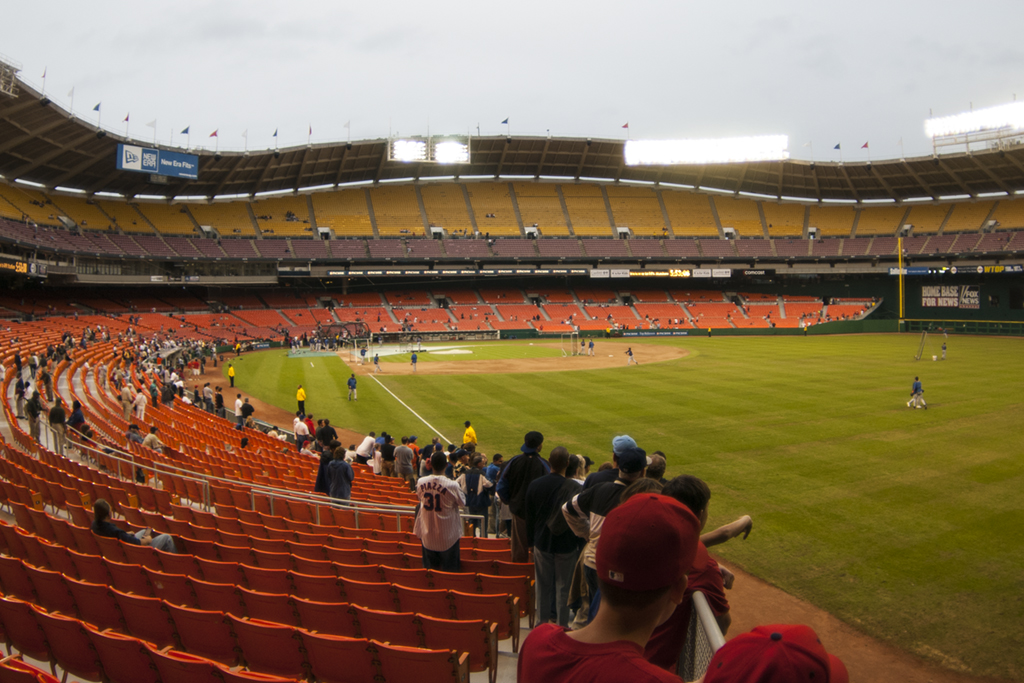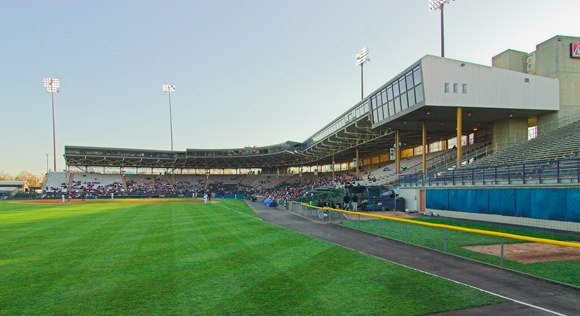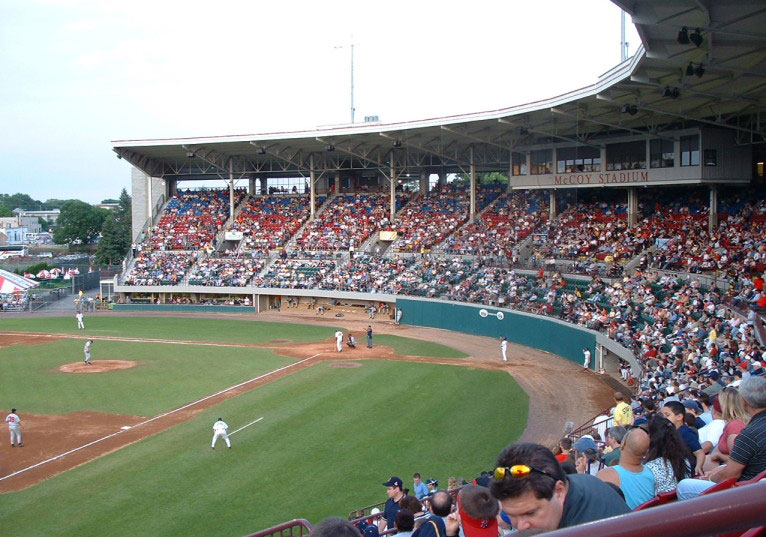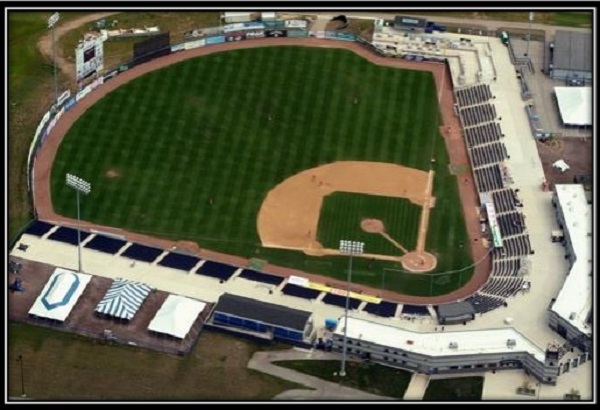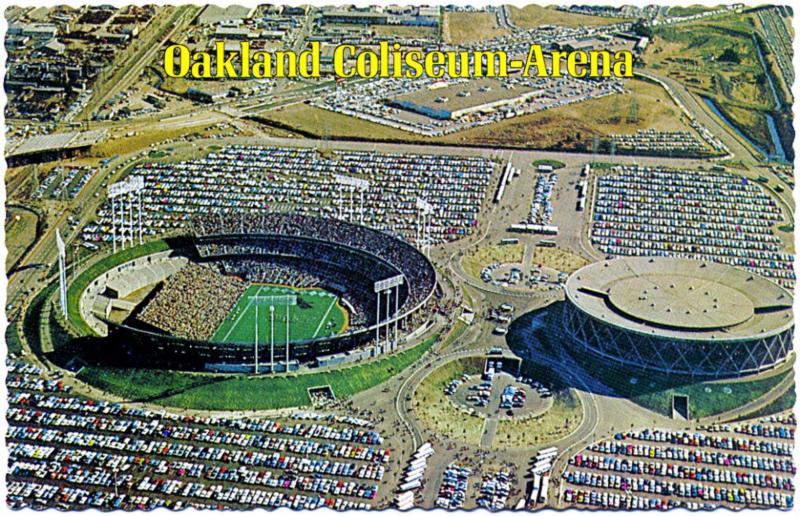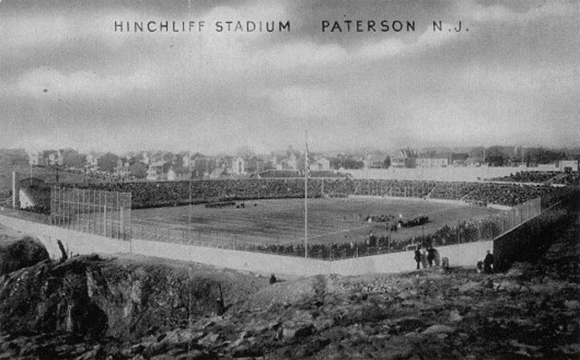Everyone loves old ballparks: the places where precious memories were created. But not every old ballpark has been adequately maintained or preserved, thus becoming an endangered ballpark. This page documents the most endangered ballparks in North America, and the odds that they will be saved.
We will be adding and deleting from this list as circumstances change; the most recent update comes in January 2021. These rankings assume that present plans and financial commitments will be honored, but in this time of the coronavirus pandemic, we are sure to see plans canceled, developers change course and governments withdraw funding. We don’t assume that we’ve listed every endangered ballpark (though we do limit ourselves to former and current pro-baseball facilities), so if you think we’re missing one, drop us a line at editors@augustpublications.com.
The latest change in this list: SDCCU Stadium. The former San Diego Stadium / Jack Murphy Stadium / Qualcomm Stadium was formerly home to the San Diego Padres. With San Diego State University embarking on a campus expansion at the stadium site, the decision was made to begin the process of tearing down SDCCU Stadium.
We have also removed RE/MAX Field from this list. With a new summer-collegiate team taking up residence at the former home of the Edmonton Trappers (Class AAA; Pacific Coast League), the former Telus Field will live on–but will likely be renovated and downsized.
RFK Stadium Opening in 1961 as the first MLB/NFL multiuse facility, RFK Stadium sports a unique architecture with a gently undulating canopy, a highly functional track system that facilitated configuration changes and a layout that actually worked for both baseball and football. RFK Stadium was indeed a cookie-cutter facility—but one that was highly functional. The center of the D.C. sporting scene for decades, RFK Stadium is now a poorly maintained, rundown facility lacking a major tenant after the move of D.C. United to a new stadium. The costs of keeping it standing are proving to be a burden for D.C. officials, who are planning to demolish RFK Stadium by 2021. Odds RFK Stadium will survive: 1,000,000-1
Aloha Stadium Built in 1975, Aloha Stadium is perhaps best known as a former NFL Pro Bowl home, but it also has a baseball history that includes its run hosting the Hawaii Islanders (Class AAA; Pacific Coast League) from 1976-1987. It is currently used for University of Hawaii at Manoa football and other events. However, maintaining the facility as it ages comes with a high price tag, which has prompted interest among state officials in the possibility of constructing a new stadium. The state has solicited proposals for a new Aloha Stadium Entertainment District, so the end of the current facility is near. Odds Aloha Stadium will survive: 10,000-1
Cooper Stadium Most of the former Columbus Clippers (Class AAA; International League) home has been torn down and what’s left is fairly sad: an old portion of the grandstand surrounded by weeds. Concerns about the property becoming a safety hazard were raised in early 2019, and the most recent plan released last year calls for part of the grandstand to be incorporated into a new office project. Odds Cooper Stadium will survive: 10,000-1
City of Palms Park The former spring home of the Boston Red Sox has been some new life as home to the Florida SouthWestern College program. A proposal for Fort Myers redevelopment would replace the ballpark and nearby parking area for a mixed-use lifestyle development. Money to tear down the ballpark in 2021 is part of the Lee County budget, but there is a debate as to what will replace it. Odds City of Palms Park will survive: 10,000-1
Ned Skeldon Stadium Home of the Toledo Mud Hens (Class AAA; International League) from 1965-2001, Ned Skeldon Stadium’s condition has deteriorated to the point where the stands have been condemned. Although the playing field is still used by adult leagues, officials in the City of Maumee—where Ned Skeldon Stadium is located—are pushing for the ballpark to be demolished, with Toledo-Lucas County Health Department deeming it a public health nuisance. Lucas County currently owns the ballpark and surrounding complex, but there have been discussions about transferring the site to the city in order to facilitate redevelopment. Odds Ned Skeldon Stadium will survive: 5,000-1
Fair Grounds Field The 2011 Shreveport-Bossier Captains (independent; American Association) were the last professional team to use the facility, which was home to the Shreveport Captains/Swamp Dragons (Class AA; Texas League) from 1986-2002 before hosting independent baseball. It has gradually deteriorated since the departure of professional baseball. Odds Fair Grounds Field will survive: 2,500-1
The Diamond The home of the Richmond Flying Squirrels (Class AA; Eastern League) has been a temporary home ever since the Flying Squirrels came to town. With progress coming on a new ballpark to be built next to The Diamond site, it doesn’t look like the ode to concrete will be around in five years. Odds The Diamond will survive: 500-1
McCoy Stadium With the Pawtucket Red Sox (Class AAA; International League) moving to Worcester, MA in 2021, the future of McCoy Stadium is very uncertain. With the city committed to a new downtown soccer-based development, the McCoy Stadium site may be more valuable as a youth facilities site. Odds McCoy Stadium will survive: 50-50
Rivets Stadium This Loves Park (IL) ballpark was built to house an independent Frontier League team and is now leased by the Rockford Rivets (summer collegiate; Northwoods League). In theory, baseball should work in the Rockford market—the largest in the state outside Chicagoland—but nothing ever worked well in this ballpark. Early in 2018 a California investor purchased the ballpark, and the Rivets management expects to play out the existing lease through 2020. The owner of the ballpark has roots in baseball, so we’re changing our evaluation. Odds Rivets Stadium will survive: 50-50
Sioux Falls Stadium Home of the Sioux Falls Canaries (independent; American Association), Sioux Falls Stadium could be demolished in the coming years after a study group recommended that the city remove rather than maintain the aging facility. With a new ballpark site and funding plan among the details that have to be ironed out, it could take years for Sioux Falls Stadium to be demolished. Still, it seems increasingly likely that the future of professional baseball in the market is at a new facility built at another site, and not at Sioux Falls Stadium. Odds Sioux Falls Stadium will survive: 50-50
Foothills Stadium The former home of the Calgary Cannons (Class AAA; Pacific Coast League) has ceased to be a pro baseball facility and would be demolished if a redevelopment plan comes to fruition. Odds Foothills Stadium will survive: 50-50
Oakland Coliseum A multi-purpose NFL-MLB venue, Oakland Coliseum (best known as Oakland Coliseum) is set to lose the NFL’s Raiders after the 2019 season. That will leave the A’s as its lone tenant, and the team is actively working to build a new ballpark at the waterfront Howard Terminal. While the A’s ballpark plans are not all final, the Coliseum has become obsolete as a major sports venue and there has been no talk of renovating it for MLB. It therefore seems inevitable that it will be demolished in the future, but the exact timing will be determined by if/when the A’s land a new ballpark. Odds Oakland Coliseum will survive: 50-50
Northwest Federal Field at Pfitzner Stadium With the Potomac Nationals (High A; Carolina League) set to move to Fredericksburg, VA in 2020, Prince William County, VA officials are trying to determine the future of Pfitzner Stadium. Redeveloping the ballpark’s site–a county-owned property that also includes three softball fields and a BMX track–could be an option, with Pfitzner Stadium either remaining in some form or being demolished to make way for another use. A decision on the site’s future has yet to made, but Pfitzner Stadium’s days as a pro baseball facility are likely numbered and county officials could decide that its site would be put to better use for another purpose. Odds Pfitzner Stadium will survive: 50-50
Sam Lynn Ballpark The former home of the Bakersfield Blaze (Class A; California League) opened in 1941 and is certainly showing its age. Now home to indy Pecos League ball, Sam Lynn Ballpark isn’t being shown much love from Bakersfield elected officials, so its future is certainly in doubt. But then again, inertia caused the ballpark to basically stay in the same condition for decades, and inertia may protect pro baseball there. Odds Sam Lynn Ballpark will survive: 50-50
Hamtramck Stadium The Detroit-area Hamtramck Stadium opened in 1930 and was home to a variety of Negro Leagues teams, including the Detroit Stars and Detroit Wolves. And, perhaps most importantly, it was a community gathering spot. The goal in renovating Hamtramck Stadium: restoring the ballpark as a community gathering spot, which means fixing up the dilapidated grandstand and establishing a usage plan that goes beyond baseball. Wayne County (MI) has been awarded $490,729 by the National Park Service’s African American Civil Rights Historic Preservation Fund for restoration of Hamtramck Stadium. Odds Hamtramck Stadium will survive: 1-200
Hinchliffe Stadium This classic Paterson (NJ) stadium has survived through the sheer effort of passionate supporters: without them, it surely would have been torn down years ago. The historic facility opened in 1932, hosting the New York Black Yankees and New York Cubans along the way, which makes it one of the few Negro Leagues ballparks that remains standing. Hinchliffe Stadium closed in 1997 and has since fallen into a state of decline. A development plan for the stadium area would include renovation funds for the stadium. Odds Hinchliffe Stadium will survive: 1-500.
Astrodome The Eighth Wonder of the World, the Astrodome is an icon to generations of Houstonians, and any talk of tearing it down instantly generates yowls of protest. The big problem: Harris County can’t really come up with a solid redevelopment plan (voters turned down a proposal to readjust the interior for football and smaller events), and a renovation approved in 2018 by Harris County Commissioners has stalled amidst concerns over its financials. A state antiquities landmark designation is among the factors that could help the Astrodome avoid demolition, but for now there plenty of questions about the future of this one-of-a-kind classic. Odds Astrodome will survive: 1-500.
Saved: Joe Davis Stadium The former home of the Huntsville Stars (Class AA; Southern League), Joe Davis Stadium opened in 1985 but fell into a state of decline since hosting its last MiLB games in 2015. City officials are renovating Joe Davis Stadium into a multi-sport facility for soccer and high school football.
Saved: Lake Olmstead Stadium Now that the Augusta GreenJackets (Low A; Sally League) have moved to SRP Park in North Augusta, Augusta is repurposing Lake Olmstead Stadium into a musical venue focused on April events centered on Masters week. In addition, promoter C4 Live will hold up to 10 other live events annually.
In memoriam: Capital City Stadium. Originally built by Hall of Famer and Pittsburgh Pirates owner Barney Dreyfuss in 1927, Columbia, SC’s Capital City Stadium went on to host several teams over its history, including the Capital City Bombers (Low A; Sally League) and Columbia Blowfish (summer collegiate; Coastal Plain League). With Segra Park now hosting MiLB action, Capital City Stadium is obsolete for baseball, and a developer could demolish the ballpark to make way for a new mixed-use development. Developers have asked city officials to hold off on tearing down the ballpark in order to obtain a state tax credit, but it seems that the facility will be demolished sooner rather than later. The ballpark will make way for new development.

